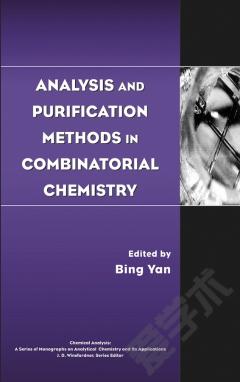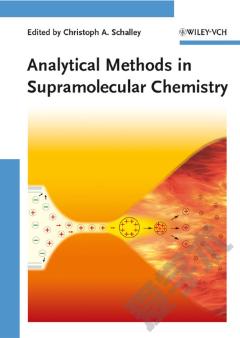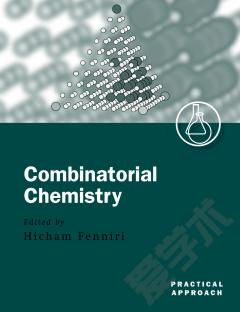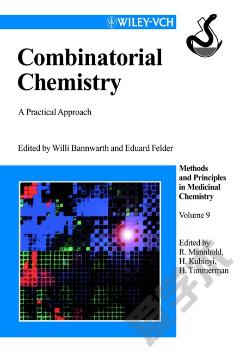Analytical Methods in Combinatorial Chemistry
Analytical issues in combinatorial chemistry Combinatorial chemistry Synthesis methods Analytical challenges Properties of solid supports Reaction Optimization Stage Library synthesis stage Lead selection and optimization stage An examination of the analytical sample: resin support Physical properties of resins Resin type Resin bead size distribution Loading and the intraresin site distribution Thermal stability Chemical stability Resin swelling and solvation Effects of swelling on resin Effects of swelling on reagent and solvent molecules Swelling ability of solvents Dynamic resin solvation Effects of the solvated resin on solid-phase reactions The effects of support solvation on SPPS Resin support as another "solvent phase" Support effects on SPOS reaction kinetics Site separation and site interaction Solid support effects on product purity Solid-phase reaction optimization using FTIR Comparison of FTIR and Raman techniques Techniques Analysis of resin-bound compounds Comparison of techniques Monitoring of polymer-supported organic reactions The monitoring of reactions on polystyrene-based resin Yes-and-no information Reaction kinetics on resin support Quantitative estimation of chemical conversions (%) on resin The selection of optimal reaction conditions using single-bead IR The monitoring of reactions on PS-PEG resins: comparing the reaction rate on PS and PS-PEG resins Background Examples Examples: Peptide secondary structure on resin support The monitoring of reactions on surface-functionalized polymers Techniques Examples Parallel reaction monitoring Reaction optimization using MS and NMR methods MS methods NMR methods Gel-phase NMR Magic angle spinning (MAS) NMR Other NMR methods Reaction optimization using spectrophotometric and other methods Qualitative analysis of amines Quantitative analysis of amines Quantitative spectroscopic methods for organic functional groups Quantitation of aldehyde/ketone groups Quantitation of hydroxyl groups on resin Quantitation of carboxyl groups on resin Quantitation of polymer-supported sulfhydryl groups Combustion elemental analysis methods Analysis of resin-bound organic compounds Quantitatively monitoring SPOS reactions Electrochemical methods On-resin X-ray, EPR, SERS, and fluorescence methods Quality control of combinatorial libraries Analysis of discrete compound libraries MS analysis MS-guided purification High-throughput NMR Analysis of pooled libraries Theoretical calculation of mass distribution MS analysis High-resolution MS Tandem MS Liquid chromatography (LC)/MS and capillary electrophoresis (CE)/MS NMR methods for mixture analysis HPLC for analyzing compounds from discrete and mixture libraries HPLC with a chemiluminescence nitrogen detector (CLND) Evaporative light scattering detector (ELSD) High-throughput purification Nonchromatographic high-throughput purification methods Chromatographic high-throughput purification methods Supercritical fluid chromatographic purification methods Purification methods based on fluorous chemistry separation technique Fluorous liquid-liquid extraction (F-LLE) Fluorous solid-phase extraction (F-SPE) Fluorous HPLC (F-HPLC) Fluorous-flash chromatography (F-FC) Final Thoughts and Future Perspectives Stability of compound collections Nano-combinatorial library and associated analytical issues Green process and technologies
{{comment.content}}








 京公网安备 11010802027623号
京公网安备 11010802027623号